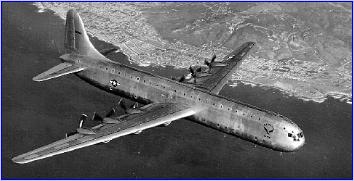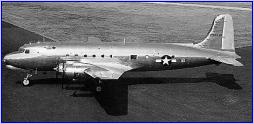|
With the acquisition of more land west of Frio City Road in 1917, Kelly Field was divided into two areas, Kelly Number 1 and Kelly Number 2. While Kelly Number 2 was busy turning out dashing aviators, Kelly Number 1, renamed Duncan Field in 1925, was engaged in a less glamorous task of aviation supply and maintenance. This humble stepchild spawned out of necessity would eventually thrive and go on to become an Air Force logistical giant. By 1935, most world powers were struggling to free themselves from the grip of worldwide depression. In Germany, Adolph Hitler had seized the reigns of power. On the other side of the globe, Japan was running rampid through Manchuria. The clouds of depression were clearing, but  clouds of war were rapidly taking their place. Aircrew training at Kelly was stepped up; courses were conducted in nearly every form of military aviation including attack, pursuit, observation and bombardment. Paved runways and permanent facilities sprouted throughout the installation. When Japanese bombs rained on Pearl Harbor on December 7th, 1941, Kelly Field was ready to takes its place as a major cog in America’s war machine. Midway through World War II, Kelly’s logistical role came to the forefront. Pilot training moved to Randolph and other new airfields while an organization known as the San Antonio Air Service Command sought to repair and supply the nation’s aerial fighting force. In two short years, the workforce expanded from 1,000 to over 20,000. Many were women, Kelly Katies, the Kelly equivalent to Rosie the Riverter. Peace came in August 1945. Kelly Katy went home. The base paused, caught its breath, and then put itself to the task of supporting the most powerful Air Force in the world. On September 18th, clouds of war were rapidly taking their place. Aircrew training at Kelly was stepped up; courses were conducted in nearly every form of military aviation including attack, pursuit, observation and bombardment. Paved runways and permanent facilities sprouted throughout the installation. When Japanese bombs rained on Pearl Harbor on December 7th, 1941, Kelly Field was ready to takes its place as a major cog in America’s war machine. Midway through World War II, Kelly’s logistical role came to the forefront. Pilot training moved to Randolph and other new airfields while an organization known as the San Antonio Air Service Command sought to repair and supply the nation’s aerial fighting force. In two short years, the workforce expanded from 1,000 to over 20,000. Many were women, Kelly Katies, the Kelly equivalent to Rosie the Riverter. Peace came in August 1945. Kelly Katy went home. The base paused, caught its breath, and then put itself to the task of supporting the most powerful Air Force in the world. On September 18th,  1947, President Harry S Truman signed the National Security Act. Among the articles contained in this legislation was one establishing the Air Force as an independent military service. Duncan Field and Camp Normoyle had been absorbed during World War II, and in January 1948, the field became Kelly Air Force Base. Within a year, the base would once more respond to an international challenge. The Russian bear was putting paw prints all over Eastern Europe. When the Soviets attempted to slam the door on West Berlin, allied air power came to its rescue. Kelly engine maintenance shops operated night and day. Pratt and Whitney R2000 engines rolled off the production lines destined for installation on C-54 aircraft flying the Berlin Airlift. The Russian bear hug on Berlin was broken after 11-months of Herculean effort by crews, aircraft and dedicated support by San Antonio Air Materiel Area workers. Less than a year later, the outbreak of the Korean War dropped the temperature of Cold War even further. Kelly personnel labored around the clock to prepare B-29 bombers and Mustang fighters for service overseas. The outdoor lighting lit up the sky at night and became famous as San Antonio’s “Great White Way”. Nuclear deterrent was the “watch word” and Kelly’s people worked in support of the intercontinental B-36 bomber, the first capable of flying anywhere in the world, dropping its nuclear payload and returning home. Its Pratt and Whitney R4360 engines monopolized Kelly’s overhaul facilities for over a decade. 1947, President Harry S Truman signed the National Security Act. Among the articles contained in this legislation was one establishing the Air Force as an independent military service. Duncan Field and Camp Normoyle had been absorbed during World War II, and in January 1948, the field became Kelly Air Force Base. Within a year, the base would once more respond to an international challenge. The Russian bear was putting paw prints all over Eastern Europe. When the Soviets attempted to slam the door on West Berlin, allied air power came to its rescue. Kelly engine maintenance shops operated night and day. Pratt and Whitney R2000 engines rolled off the production lines destined for installation on C-54 aircraft flying the Berlin Airlift. The Russian bear hug on Berlin was broken after 11-months of Herculean effort by crews, aircraft and dedicated support by San Antonio Air Materiel Area workers. Less than a year later, the outbreak of the Korean War dropped the temperature of Cold War even further. Kelly personnel labored around the clock to prepare B-29 bombers and Mustang fighters for service overseas. The outdoor lighting lit up the sky at night and became famous as San Antonio’s “Great White Way”. Nuclear deterrent was the “watch word” and Kelly’s people worked in support of the intercontinental B-36 bomber, the first capable of flying anywhere in the world, dropping its nuclear payload and returning home. Its Pratt and Whitney R4360 engines monopolized Kelly’s overhaul facilities for over a decade.  A proud yet poignant story revolves around the cargo version of the B-36. The XC-99 transport was the largest cargo aircraft ever built until the advent of the massive C-5A. The huge bird nested at Kelly and from this base of operations set numerous cargo hauling records, but logistics theorists at the time balked at having too many eggs in one basket. Cost of maintaining this one-of-a-kind aircraft grew prohibitive. It now sits next to Kelly's runway; silently watching the C-5s fly the role it pioneered. A proud yet poignant story revolves around the cargo version of the B-36. The XC-99 transport was the largest cargo aircraft ever built until the advent of the massive C-5A. The huge bird nested at Kelly and from this base of operations set numerous cargo hauling records, but logistics theorists at the time balked at having too many eggs in one basket. Cost of maintaining this one-of-a-kind aircraft grew prohibitive. It now sits next to Kelly's runway; silently watching the C-5s fly the role it pioneered.
|